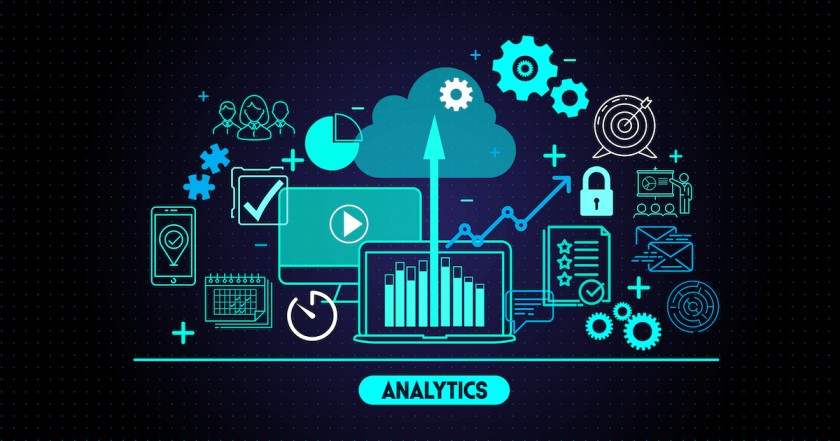‘What do I need to do to join the Analytics Industry?’


I must admit that I was a little apprehensive before I began to write this particular piece. This is possibly a regular question at college seminars and talks. The article itself has probably been done to death. I mean let's face it, the general population who are interested in data science and analytics have enough information available. Maybe too much information. However, given the fluid nature of the industry maybe there is a justification. The answer to this question has evolved and changed over the years. Data and Analytics have become more ‘democratised’ and available to all. It is no longer dominated by the techno - elite. While technology and tools form a core part of this job description, broadminded, multifaceted and talented individuals have a lot to offer companies through their insight, enthusiasm, creativity and wit.
It was approximately 12 years ago that a The Harvard Review article came out, citing data science to be the ‘sexiest job of the 21st Century’. It was a phrase that immediately sent college students and young professionals into a tizzy, with parents scrambling to find out where and how they could turn kids into analytics and data science rockstars. A phrase which today, in hindsight, I can say with a definite degree of certainty has been used (and abused) by most professionals trying to market programs and courses in Data Science and Analytics. In 2009, there were only a handful of professionals and players across the country specialising in Analytics education and training. Fast forward 14 years to 2023--some of those pioneering institutions have remained, some have sold their stakes to larger organisations, and many of the smaller organisations and clones, unable to fight through the transitions, viruses and technical demands of the Analytics Industry, have evaporated.
The good news is that there is still a huge demand for Analytics talent. As any HR professional or recruiter will tell you, Analytics Professionals are a difficult breed to come by. The right balance of technical skill, communicative abilities and leadership talent (for managerial and client-facing roles) is essential. However, recruiters, aspirants and companies have learnt a lot. Most importantly, they have realized that there is a need to separate the nonsensical resumes of freshers who claim to have more knowledge than seasoned veterans, from professionals who understate their skills and fail to express their strengths.
There’s a lot that goes into making a data scientist. Yes of course, Google and Chat GPT will throw up some standard areas which are crucial and fundamental to data science applications. And I’ll first talk about these obvious areas (which you are probably aware of) you would need to focus on and then move on to the not-so-obvious areas and attributes. Most HR Managers and recruiters will agree that it is these less obvious areas that make or break not just applications but also careers in this industry.

What they’ll tell you...
R and Python
A knowledge of tools such as R and Python are a definite requirement today. SAS was the need of the hour till about a few years ago, but there has been a gradual and confident movement towards open source software for a majority of organisations. As a Data Analytics professional we don't really expect you to do any major kind of complex programming on these tools, rather knowledge of the tools and an understanding of the software is a basic prerequisite for the application of a few key analytical and statistical techniques. Again you really don’t need to be a statistics whiz. You do need a list of key techniques covered in Descriptive, Inferential, Predictive and Prescriptive Statistics. If you are learning these through a course and program, great! If not, take your time to do so. Conceptual understanding of these may be the underlying factor between cracking or failing your first interview.
Application of Analytical and Statistical Concepts on R and Python
To start, let me address the first question going through your heads. No, you don’t have to have a specialised background in Statistics to pursue a career in this field. Over the last 12 years most of the students and professionals I have worked with were from non-statistics backgrounds. However, that said, ensure that you are learning the necessary techniques well and are conceptually clear about their use and application. Start by learning the basics of statistics, data analysis, and business concepts. This could involve taking online courses, reading books or articles, or attending workshops.
In the event of your joining a Business Analytics Program, ensure that the consultants and the trainers have the time and bandwidth to take you through these concepts. A lot of institutes aren’t too encouraging here, but a little research will lead you in the right direction. At the end of the day it is more about your ability to apply statistical techniques on software like R or Python. However, when recruiters see your background, they will definitely want to test your understanding and confidence in Statistical concepts. Be ready to be given a case study or two so that the interviewer (generally during the technical round) can assess your hands-on knowledge.

Data Visualisation
Tableau and Power BI are the tools to know. Today it is not just about understanding data but also about visualising interpreted data--Data storytelling, so as to say. Remember, at the end of the day, your client needs to be able to understand the endless rows and numbers in a visualising enticing manner, which can also draw out insights and potential target areas for your client to focus on.
SQL
SQL or Structured Query Language, provides a powerful set of tools to retrieve, analyse, manipulate, integrate, and visualise data.
Advanced Excel
One of our most underrated tools. While we like to talk big, the fact remains that Excel is still one of our most versatile tools. It has come a long way though, with numerous add-ins and features, making it a core component of an applicant's portfolio.
Practice your skills by working on real-world projects
This could involve participating in competitions, contributing to open-source projects, or working on your own personal projects. Look for opportunities to work with data sets and to apply your analytical skills to real-world problems. Remember, there will never be ‘the perfect time’ to pursue these skills. The earlier you start, the better.
And now, let’s take a look at…
What they don’t tell you…
Connect with other professionals in the field, attend industry conferences and events, and collaborate on projects with other data analysts. This can help you build relationships and learn from others in the industry.
Ensure you have an active and updated LinkedIn profile, reflecting your interest in this field, along with your achievements and work.
The process of browsing through Job Descriptions for Data Science and Business Analytics positions can be intimidating and demotivating if you are from a non-technical background. Don’t get intimidated by jargon. Even Art students can become Analytics Professionals. I did. I blame the educational system to a certain extent here. The inability and ludicrous compartmentalisation of arts in a manner which prevents us from pursuing subjects like Maths/Statistics or Computer Science is archaic thinking. I loved Computer Science and Data. I only managed to get back to it once I started working.
Unfortunately, these tools, software and application to analytics which one is generally expected to know, are not part of any regularised course structure in schools and colleges. While there has been an attempt of late to jump onto this bandwagon, most colleges and educational institutions appear to be oblivious to changing realities and needs of the data science industry. As companies look for keener insights, topics and programs must change and adapt. Simply put, the curriculum needs to be tweaked every 6 months and more formal changes should be implemented at least once a year. Case Studies and Projects need to be regularly aligned to industry needs. Industry feedback must be sought in order to ensure that programs are aligned towards the reality. Presently, red tape and bureaucracy hinder and limit such frequent changes in syllabi and curriculum in colleges and Universities. However, the nimbler and successful Private Institute may be quicker to adapt and change.
Children and students need to be exposed to data, and data handling from school. I noticed that the ICSE and CBSE boards have included Data Interpretation and Visualization (Charts and Graphical Representation) from Class 6. These measures will go a long way in preparing the next generation for the quantum leaps in this field.